Lagenaria siceraria
Is it a gourd? Is it a vegetable? The Italian cucuzza squash is all of that – and then some.
This variety has the white flowers you might be used to seeing on gourd vines, yet it produces long fruits that can be eaten just like you would eat any other kind of summer squash, such as zucchini.
These fast-growing fruits are rumored to appear and grow so rapidly that it may be possible to enjoy a harvest every single day at the peak of the summer. Some gardeners claim that their fruits grow up to ten inches in a single day.
Whether that’s true or not, there’s one thing that I know for sure: they taste absolutely delicious!

We link to vendors to help you find relevant products. If you buy from one of our links, we may earn a commission.
You can also choose to harvest the fruits of this plant when they are more mature, and use them just like you would use any other ornamental gourd.
The plant is sold and described under many different names, including cucuzzi, calabash, Italian squash, serpent of Sicily, bottle gourd, longissima, Italian edible gourd, googootz, suzza melon, Tasmania bean, and zucca, just to name a few.
No matter what you call it, Italian cucuzza squash is an annual plant that is worth growing in your backyard veggie patch.
Ready to learn more? Here’s what’s ahead:
What You’ll Learn
What Is Italian Cucuzza Squash?
Italian cucuzza squash presents something of a quandary in the vegetable gardening world.
It looks like a gourd, but is harvested and eaten like a summer squash. It is also quite similar to a young luffa plant both in terms of how it looks and how it grows.
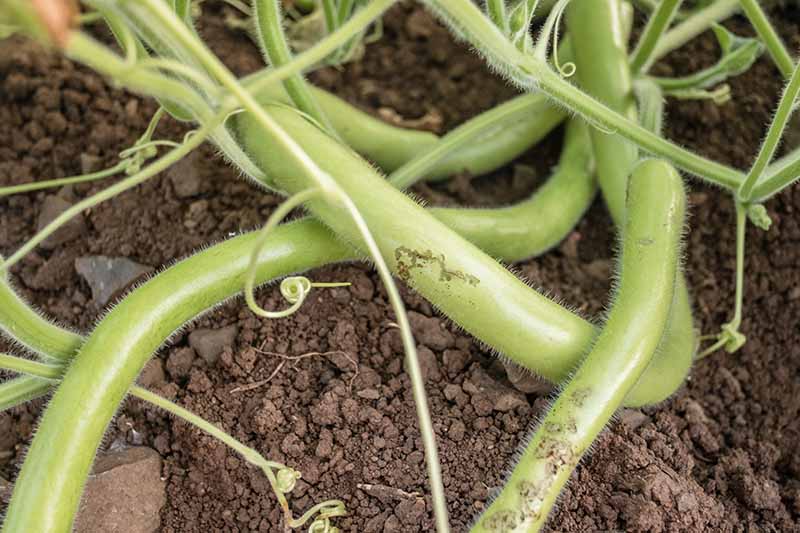
It is the same species as birdhouse gourds, and shares the same growing requirements as these and other decorative gourds, requiring support systems as its vines get longer.
Italian cucuzza is an annual that produces hairy, dark green, shallow-lobed leaves and attractive white flowers. It has long, sprawling vines up to 25 feet in length. The fruits can be long and straight or they can be twisted and coiled.
Growing to about 10 to 16 feet long on average, and sometimes much longer, each vine is covered with foliage. Each plant will bear trumpet-shaped male and female flowers that bloom primarily at night. After pollination by bees, fruits will appear.
The fruit has a pale green skin when young that darkens to a yellow or pale brown color when mature, surrounding an interior that is creamy white.
Italian cucuzza originates in tropical and subtropical locations, and it grows best in hot, humid conditions.
Gardeners in warmer climates will see the most success in growing this vegetable, but it may be grown in USDA Hardiness Zones 2 through 11. With a bit of preparation – and the ability to start seeds indoors early in the spring in peat pots – even northern gardeners can grow this tasty plant.
Cultivation and History
Native to Africa and southern Italy, and found since ancient times in semi-tropical and tropical areas around the world, it produces hardshell gourds that are not only edible, but can also be used for other purposes as well.
Aptly named, with the genus name Lagenaria coming from the Greek word for “flask,” the waterproof hard shells of the mature fruits were in fact grown for many non-food uses, such as creating musical instruments, decorations, or smoking pipes.
Of course, most gardeners choose to grow Italian cucuzza squash for its tasty fruits, but you can also eat the leaves, shoots, and young seeds. Older, more mature seeds tend to be hard and unpalatable.
Propagation
It is best to sow seeds directly into the garden, since the roots of this plant are fragile and don’t handle transplanting well. Plus, since it grows so quickly, you shouldn’t have any trouble getting it from seed to harvest even in the northernmost reaches of this plant’s growing zones.
However, if you want to get a head start, you can try starting seeds indoors in biodegradable pots several weeks prior to the last spring frost date. Plant seeds half an inch deep in potting medium and water deeply after doing so.
Maintain even moisture and place the pots on a heat mat set to 70°F. After germination, set the pots in a bright location. Plant out in the garden after all risk of frost has passed.
Sow seeds directly outdoors once soil temperatures have reached 70°F. Plant three to four seeds together in mounds that are three feet apart if you plan to use supports, or four to six feet apart if you do not. Otherwise, they will become overcrowded.
Once seedlings emerge and have at least one set of true leaves, you can pinch off the smallest ones and allow just one seedling to remain per mound.
How to Grow
The best spot to plant your cucuzza seeds will be in a full sun location that receives a bit of light afternoon shade, and they do well in hot, humid conditions.
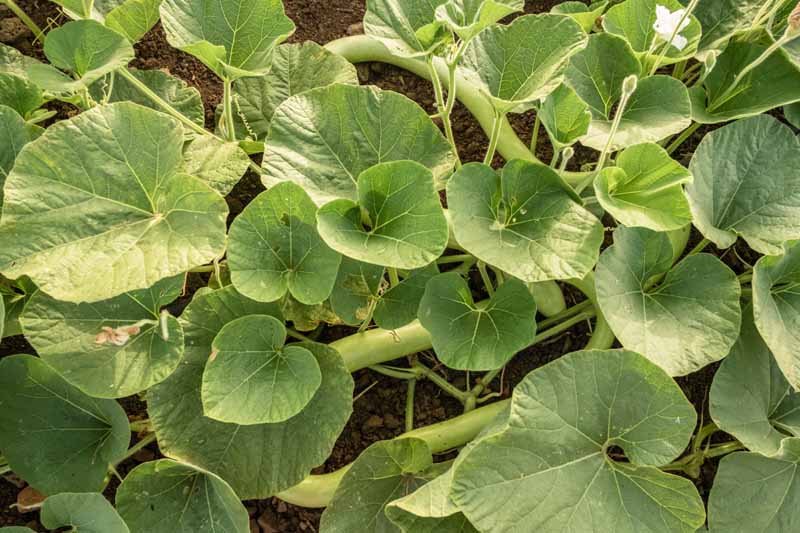
Amend the soil prior to planting by applying about one pound of compost for every five square feet of growing area.
A slightly acidic soil pH between 5.5 and 6.8 is preferred. Fertile, well-draining soil is best, and it should be light and sandy or loamy.
Water at least once per week in the absence of rain to keep the soil consistently moist. Do not let the soil dry out, but also avoid letting it become waterlogged.
Italian cucuzza squash plants bloom at night. Although they are considered self-pollinating, hand pollination may be necessary if pollinator populations are poor in your area.

Fertilize your Italian cucuzza just like you would summer squash or cucumbers.
The best method for fertilizing is to amend the soil prior to planting, preferably after conducting a soil test to check for any nutrient deficiencies.
However, you can also add a side dressing of compost or manure later on. This should be done after the seedlings have been thinned and are at least three inches tall.
Water deeply after applying about four inches from the stems of the plants. Watering will help the nutrients soak into the soil. This process can be repeated once every three weeks during the growing season.
You should avoid applying any fertilizer that is high in nitrogen or this can result in the plant producing a lot of foliage and fewer fruits.
Mulch can help the soil retain nutrients and moisture. Apply a two-inch-thick layer of organic mulch, like wood shavings or straw, at any time after your seedlings emerge.
Keep it about an inch or so away from the base of the stems.
Growing Tips
- Amend the soil prior to planting with compost.
- Plant in a full sun location.
- Water deeply at least once per week in the absence of rain.
Pruning and Maintenance
Italian cucuzza squash doesn’t require pruning, except to remove dead or diseased leaves and blossoms.
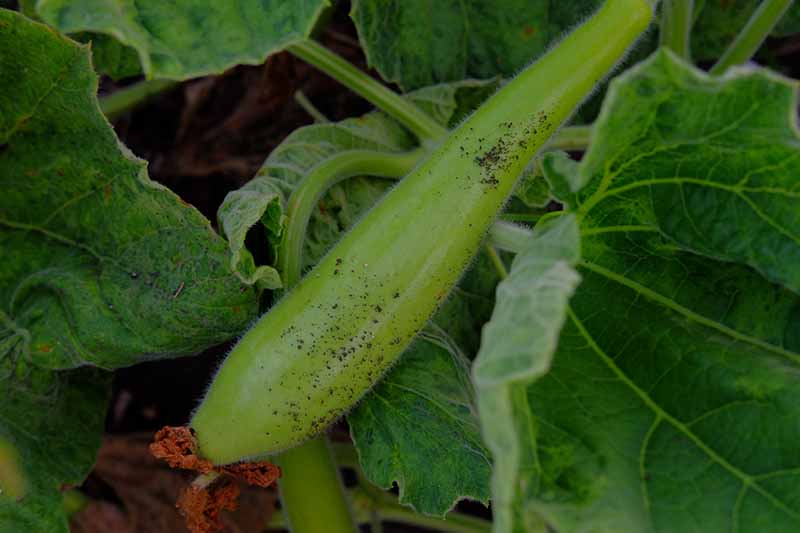
Although you can allow the vines of these plants to sprawl on the ground, if space is available, many gardeners instead choose to grow them on support structures. You can use a freestanding support to bear the weight of the entire plant, like a wooden or metal teepee, or use a fruit sling to hold just the fruits.
If you plan to harvest the gourds for ornamental purposes, rather than for their use in the kitchen, you may want to stake the vines in order to prevent the fruits from becoming misshapen as they come into contact with the ground.
You can use fences or trellises to provide support. You don’t need to get overly fancy with this! Something like a cow panel or chain link fence will work just fine.
Adding a trellis as soon as the seedlings emerge will prevent the fruits from touching the ground and damaging their final appearance and form. Installing your trellis early, before the plants have grown large and developed fruits, will also prevent you from damaging the delicate vines later on.
Where to Buy
There are no cultivars of Italian cucuzza squash to be considered. Shopping should be easy, except for the fact that it can sometimes be difficult to find seeds at your local gardening supply store!
While this isn’t necessarily a rare plant, I have noted that the seeds can be difficult to come by.
Fortunately, there are several places you can buy these rare seeds online. You can find seeds available at True Leaf Market.
Managing Pests and Disease
Italian cucuzza squash is vulnerable to several common insect pests and diseases, many of which target other squash plants as well.
The good news is that most herbivores, like deer and rabbits, tend to leave well alone.
Insects
The following insects are ones to watch out for when caring for your plants.
Aphids
Aphids are fond of all kinds of garden plants, but squashes and gourds are no exception. There are several different species, such as melon aphids (Aphis gossypii) that will eat your plants.
These hang out primarily on the underside of leaves. Here, they’ll suck sap from plants and cause a reduction in the quantity and quality of your fruit.
You may suspect an aphid infestation if your plant leaves curl downward, turn brown, and die. Unfortunately, aphids are also known for attracting ants as they release a sticky substance known as honeydew, upon which ants feed. You will likely find that your plants are unaffected until the vines form runners.
At this point, you will want to consider spraying with soapy water, then rinsing with clear water. You can also use insecticidal soap to get rid of aphids.
Learn more about how to manage aphids in our guide.
Cucumber Beetles
Cucumber beetles (Diabrotica spp.) are common pests of cucurbits like squashes, pumpkins, melons, and cucumbers.
The beetles can not only damage the plant as they feed, eating everything from the flowers to the fruit, but they can also transmit bacterial wilt, a well-known disease of Italian cucuzza squash.
This disease overwinters in the beetles’ intestines, according to Randall Griffin and Joey Williamson at Clemson University, and is spread from plant to plant as the pests eat.
These beetles can be kept off your plants by the use of floating row covers. You will need to remove the row covers from your plants when flowers appear, as these need to be pollinated.
You can also handpick the beetles, which tends to be time-consuming yet effective.
Eliminating weeds in and around the area where your squashes are planted can be helpful as well.
Pickleworms
Pickleworms (Diaphania nitidalis) have the ability to severely affect all kinds of cucurbits, including Italian cucuzza. These caterpillars tunnel into fruits, stems, buds, and flowers, though they prefer the fruit. They’ll leave behind a sawdust-like material in their wake.
Unfortunately, fruits that are damaged by this pest are not edible, and they can kill entire plants.
They aren’t as common in colder climates, as they do not overwinter in the soil or plant debris. You can spray for pickleworms as soon as the first flowers appear on your plants, using either Bacillus thuringiensis (Bt) or spinosad.
Squash Bugs
Squash bugs (Anasa tristis) are also common pests of Italian cucuzza squash. Your plants can be completely killed by this sap-sucking pest. The leaves tend to be affected first, with those that are targeted being prone to rapid wilting.
Because they overwinter in protected places in the garden, it’s important that you clean up the area well after you harvest in the fall. Get rid of any vines, fruit, and weeds.
You may need to apply insecticides but this is best done early in the season, when the bugs are still in nymph form. Adults can be difficult to kill.
Learn more about identifying and controlling squash bugs.
Squash Vine Borers
A final pest to watch out for is the squash vine borer (Melittia cucurbitae). This is a major enemy of all types of squash. It doesn’t usually go after other cucurbits, like melons and cucumbers, instead preferring to dine on squash plants.
The larvae of this pest create tunnels in stems, which alone is often enough to kill the plant, but sometimes fruits are attacked, too.
You’ll know vine borers are at work if you see a bit of sawdust-like material left behind near holes in the stem.
These pests also overwinter in the garden, hanging out in the soil until the next year. Tilling in the late winter can expose overwintering pests and kill them, while rotating to a new spot in the garden each year is another effective way to prevent infestation.
Keeping your plants well-watered and planting as early as the weather permits in the spring can also help reduce the incidence of these pests, since they don’t usually emerge until early in the summer and tend to target drought-stressed plants.
Disease
Although many of these diseases can be prevented by moderating moisture in the garden and making sure there is adequate space and airflow between your plants, you should still keep an eye out for the following issues.
Anthracnose
Anthracnose is caused by species of fungi in the Colletotrichum genus, and requires prolonged periods of cool, rainy weather to pose problems.
The first signs of this disease are spots on the leaves that look like yellow, water-soaked areas. Eventually, these spots get larger and turn from brown to black. You may notice that the tissue dries up and the middle of each spot actually falls out, making it look as though your leaves have been shot with a shotgun.
Fruits can be affected too, and may have large, black cankers that are sunken in.
To get rid of this disease for good, you will often need to remove and destroy spent vines. The disease can survive the winter, so rotating your crops is important. Make sure you purchase seeds from a reputable source, as the disease can be transmitted through the seeds as well.
You may also be able to use fungicides to stop the disease from spreading further in the garden and to get rid of it in existing plants.
Bacterial Wilt
Bacterial wilt, caused by Erwinia tracheiphila, is a common disease among cucurbit plants. It causes severe wilting of the vines, and eventually, total death of a plant.
At first, it might affect just a few vines, but as the disease progresses, more leaves will wilt until the entire plant has succumbed.
There is no chemical method of control for this disease available once it has set in. Spread by cucumber beetles, it is best prevented by controlling these pests, as detailed above.
Downy Mildew
Downy mildew, caused by Peronospora sparsa, is a leaf disease of cucurbits, generally affecting the upper leaf surface of a plant first.
You’ll notice small yellow areas on the upper surface of the foliage, with lesions eventually expanding to become brown with irregular margins. The lesions might grow together, eventually becoming so large and widespread that the entire leaf is killed. You might notice a gray mold on the bottom of each leaf, too.
Fortunately, the fruit is not typically affected, but this fungal disease can cause the fruits of some plants to become less flavorful.
You may need to use a fungicide to get rid of this disease if symptoms are severe, but watering wisely first thing in the morning so leaves have time to dry off, and providing space between plants, can help reduce the incidence of this disease.
Fusarium Wilt
Also caused by a fungus, Fusarium oxysporum, Fusarium wilt first attacks the roots of plants before moving into the stems.
It tends to target older, more established plants first, causing them to wilt and eventually killing them. It may create a white mold on dead vines, with affected seedlings rotting at the soil line before they die.
Since it can survive in the soil for several years, crop rotation is essential. Water management, as with other fungal diseases like downy mildew, is also important.
Minimizing root stress by sowing seeds directly in the garden for planting in biodegradable peat pots can also help reduce the likelihood of Fusarium wilt. Unfortunately, there are no chemical treatments available for control.
Powdery Mildew
Powdery mildew is a particular problem on late-planted squash, so planting your seeds early can help you get ahead of this disease.
A fungal issue, it usually affects just the leaves and stems of plants. It creates a white growth on your plants that is most common when temperatures are hot and humid. Although it doesn’t usually harm fruits, it can stunt the growth of your plant and its fruits if left unaddressed.
Fortunately, this disease is relatively easy to address with environmental controls. Water early in the morning so leaves have time to dry off, and make sure there is adequate room between your plants to allow for airflow.
You can use fungicides if the disease is severe, but such treatments are rarely necessary.
Harvesting
You can harvest your squash when they are young and light green, with skin that is still relatively soft.
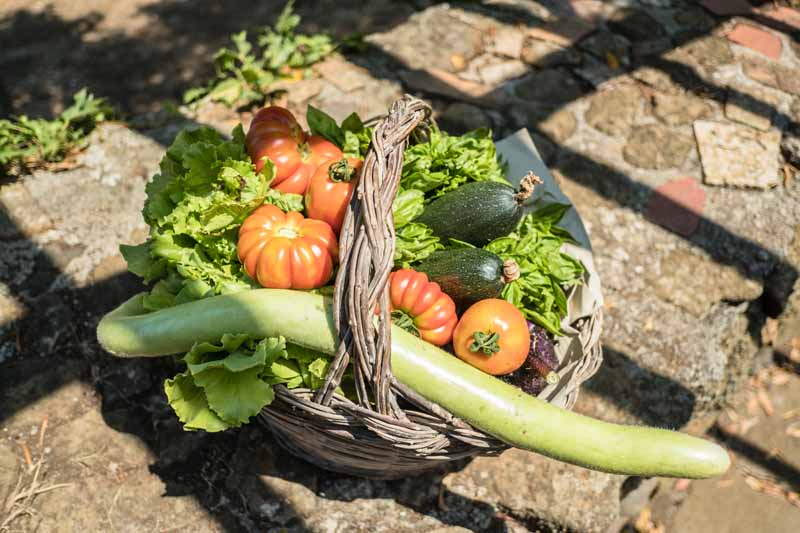
If you wait to harvest, the skin will harden and might develop small bumps. Although it still may be acceptable for use in some recipes, it could be tough and difficult to peel. They may be overly seedy, too, which can be challenging to use in recipes.
Ideally, a harvest-ready Italian squash will be around four to five inches long. The plants themselves will be around three feet long at harvest time. You can harvest by gently snapping each fruit from the plant. Leave a bit of the stem intact as this will help it last longer if you won’t be using the harvest right away.
You may find that using a pair of sanitized scissors or shears is easier to get your fruits from the vine. This will prevent you from damaging the plants as well.
You will be able to harvest squashes continuously throughout the growing season. The more often you harvest, the more your plant will produce!
Be attentive to your plants throughout the growing season but especially as harvest time approaches. These plants grow rapidly, so you will want to look carefully for fruits. They hide easily among the large, all-encompassing leaves of the plant!
After you have harvested your Italian cucuzza squash, stash them in the refrigerator, ideally in the crisper drawer. No wrapping is necessary as long as you haven’t peeled them. They should stay fresh for a week.
Preserving
For the best flavor, use your Italian cucuzza squash within a few days of harvest. It can also be frozen or pickled.

To freeze, wash under cold water, then peel and cut into quarter-inch slices.
Blanch for one minute in boiling water, then drain and run under cold water. Allow the pieces to cool completely, then put into a freezer bag, removing as much air as possible, and place in the freezer.
After you’ve frozen the squash, you can use it in casseroles or other recipes later on. The frozen slices should maintain their quality for at least 10 to 12 months.
You can also pickle your Italian squash, following the same process you might use for other kinds of summer squash, like zucchini. Consider making bread and butter pickles with this recipe from our sister site, Foodal.
You can even swap out Italian squash in your favorite lacto-fermented dill pickle recipe too! Give this one from Foodal a try.
Recipes and Cooking Ideas
Peel your Italian cucuzza squashes before you cook with them.
Although some people recommend removing the seeds before you cook them, if you harvest at the right time, the seeds should be barely noticeable since they will be tender and small.
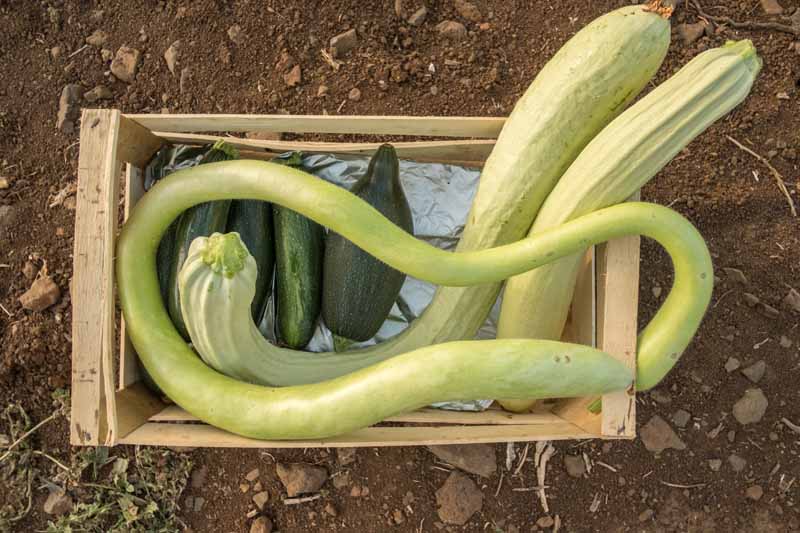
Italian cucuzza squash tastes much like zucchini, so it can be used as a substitute for zucchini and other types of summer squash in just about any recipe.
Some cooks say it tastes a bit blander than zucchini, though, so you may need to use some additional seasonings in your cooking.
It tastes best fresh out of the garden, and it’s wonderful sauteed in a bit of olive oil with garlic and onions.
Don’t forget, you can eat the seeds and shoots, too. Tenerumi are the leaves and tender shoots of cucuzza, often referred to as taddi di cucuzza in Sicily and Calabria.
They are best sauteed, but do peel the shoots first to remove any thorns. You may also want to trim the ends of the shoots to get rid of any tough pieces. Add a bit of olive oil, garlic, and salt, and you have a nutritious and delicious side dish!
When it comes to eating the seeds, most gardeners and cooks opt to leave the young seeds inside the fruits and cook them all together. Fully mature seeds are less palatable, and not typically eaten.
Still stuck for dinner ideas? Find additional recipes by visiting our sister site, Foodal, and checking out their list of tasty ideas for summer squash.
Quick Reference Growing Guide
| Plant Type: | Annual vegetable | Water Needs: | Moderate |
| Native to: | Africa | Maintenance: | Medium |
| Hardiness (USDA Zone): | 2-11 | Tolerance: | Heat |
| Season: | Summer | Soil Type: | Organically rich |
| Exposure: | Full sun | Soil pH: | 5.5-6.8 |
| Time to Maturity: | 55 days | Soil Drainage: | Well-draining |
| Spacing: | 3 feet | Attracts: | Hummingbirds, pollinators |
| Planting Depth: | 1/2 inch (seeds) | Family: | Cucurbitaceae |
| Height: | 9-18 inches | Genus: | Lagenaria |
| Spread: | 10-16 feet | Species: | Siceraria |
| Common Pests: | Aphids, cucumber beetles, pickleworms, squash bugs, squash vine borers | Common Diseases: | Anthracnose, bacterial wilt, downy mildew, fusarium wilt, powdery mildew |
Form, Function, and Flavor in the Garden
If you want to grow a vegetable that offers an attractive form in its elongated gourds, Italian cucuzza squash is the way to go.

Mature gourds can be dried and used for all kinds of crafts and decorations, but if you harvest the fruits early, they serve as a tasty alternative to zucchini and other types of summer squash in all your favorite recipes.
This plant is easy to grow, provided that you give its vines room to sprawl. Consider sowing some seeds in your garden this summer!
Have you grown Italian cuccuzza squash? Let us know in the comments section below and feel free to share your favorite recipes!
Want to learn more about growing all the squash you can eat? Take a look at these articles next:
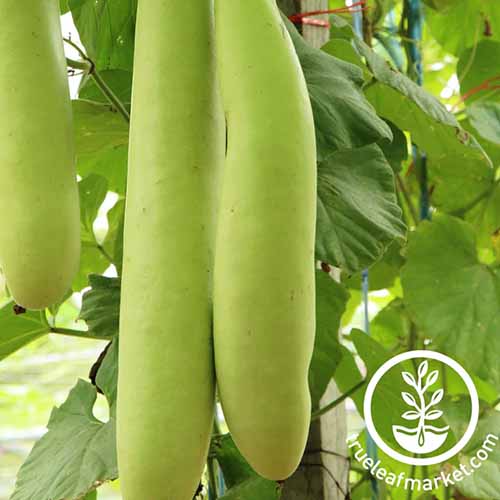

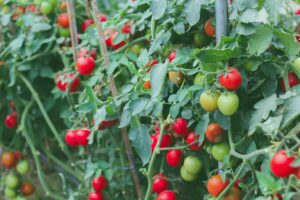
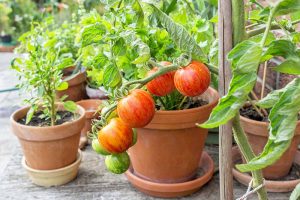
I enjoyed your article above on cucuzza. Very informative and helpful. I grew cucuzza last year and was ver successful and bug free for the most part. This year however, a small insect that looks like a tiny mosquito has found the plant. The bugs are slow to move and you can squish them with your fingers or even cut them with a small pair of clippers. The cucuzza fruit is pock marked with brown spots which is the damage they leave. They seem to congregate around the dying flowers or rest on the leaves so they must move to… Read more »
Hi Joe, we were experiencing some technical difficulties with our comments section, but that is now fixed! You should be able to upload photos now, and then perhaps we can better help you with your problem. Thanks!
Thanks for this great informative article.
I am wondering why my cucuzza are growing and when they reach about finger size they turn yellow and when snapped in half you can see they are brown in the middle. We have had a lot of rain so it might have something to
do with that. Some of the plants have yellow leaves.
Any suggestions on why they are turning brown.
Hi Josephine,
I think you might be right that an excess of rain may have caused the problem you’re experiencing, and this problem might be exacerbated if your soil doesn’t have quite enough drainage. I would keep my eye on them for another week or so and see if the condition starts to improve. If not, please share photos and one of our team will try to help diagnose your problem. Fingers crossed though that your plants start producing healthy, green fruit!
I don’t water my cucuzza at all, because whenever I do I get rotten fruits even if I am in a sandy soil zone 4.
When there are too many fruits some of it also rots it seems (probably because of a bad pollination or because of the heavy harvest).
The plants are huge and it’s loaded with 1 meter long cucuzzis, it was a nice discovery the plant is amazing.
Next year I will grow cucuzza and sunflowers together and make a huge impenetrable cover crop of 6+ feet tall with it.
Hello Bbertr and thanks for joining the convo. I’m so glad you have a thriving cucuzza crop, and I agree, they are amazing! You didn’t ask, but it is possible like you said that the fruits rot when there are too many due to poor pollination. Blossom end rot due to uneven watering or going too long between watering bouts could also be the cause, but I’m glad that your yield is so substantial you don’t have to fret about that. Please send photos of your future impenetrable cover crop! I’m sure I’m not the only one who would love… Read more »
is it bottom rot. spray with calcium
Hello trackside that is a possibility, thanks for weighing in.
The small delicate white flowers seem to wilt on the long stems after opening in less then a day. Is this normal? And I am not seeing any female bulge on any of the many slower buds. Will the female flowers start later?
Hi Julie,
What you’re experiencing is quite normal! The flowers of these plants tend to last for a day or less. And they actually bloom at night because they are pollinated by moths that are active at night.
And I wouldn’t worry that you haven’t seen any female flowers yet. These plants can be very slow growers – you will eventually start to see female flowers too. Speaking from experience, growing gourds can be quite an exercise in patience!
Wishing you a bountiful cucuzza harvest – all in good time.
Hi, I’m in the UK but originally from Palermo. We have eaten Tenerumi and cuccuzza all my life. This year for the first time I tried to grow it in my garden, outdoors and not in a green house. I didn’t have much hope for it the weather here not being all that warm. However, it grew like a triffid and completely took over my veg beds! We harvested the leaves and we have plenty of tenerumi, but the cuccuzza itself was slow to grow so we didn’t really get any of the big long snake like gourds. Yesterday a… Read more »
Sorry to hear about the storm, Sam! These will be great to eat when they’re this size, since the seeds are undeveloped at that stage. As for the flowers, I was unable to find any evidence of people eating these, though they do have a history of medicinal use.
Hi there, we planted the Cuccuza for the first time but didn’t expect it to grow this fast. It has a lot of flowers and fruit but don’t seem to grown. They wilt and go yellow and brown. We’ve had a lot of rain this summer Could that be the reason.
Many thanks.
Aw, Hourie, I hate to hear about the yellow and brown squash plants. Fusarium wilt or squash bugs could be the culprit, or, yes, receiving too much water. Would love to see a photo of the issue to diagnose it more fully. If you plant them again next year, make sure to pick a different spot in the garden so the new plants don’t get infected by soilborne diseases or insects that overwintered in the garden. Good luck!
My family from Sicily was made up of many farmers who grew these, usually on fences or some structure. They also trimmed the leaves from the first few feet of the plant as it grew and removed some of the off shoots so it did not make to many(these new offshoots, Tenerumi, were also eaten usually with pasta).. This usually resulted in more flowers with fruit on them as opposed to just all flowers. I use these methods when I grow them with good results.
Thanks so much for sharing tried-and-true pruning tips from Sicily, Domenico. Happy gardening!
Ive had 8 or more female flowers dry up and die before they even have a chance to bloom. I dont see aphids or any other bugs that could be destructive. Any idea why this is happening? Is this normal?
Tried to post photos but doesnt seem to work
Hi Joseph, we have been having some problems with photos, can you try again? Make sure you click the paperclip icon on the bottom right of the comments box.
Have other female flowers bloomed, and been pollinated successfully? If this is the case, other flowers will often fall off if the vine isn’t able to support more fruits. Excessive heat or fertilizing with too much nitrogen can lead to blossom drop as well.
Thank you for the reply. I believe it was probably the nitrogen rich garden soil I planted them in. The first blossoms died like I said but the plants have since grown like crazy. Since my original post I have harvested 6 cucuzza and shared with family and friends. Currently, I have 38 more cucuzza growing not including the small females that haven’t blossomed yet. Luckily I have a big Italian family who will enjoy them all!
Thank you for the excellent article. We grew cucuzza last year with some success(photo) and were hoping for a more bountiful harvest this year. Our growing zone is 5-6. However, the pollinated females, which have been abundant, are dying off.(photo) I see by your responses to Josephine that too much water and poor drainage may be a culprit. We added 4-6-3 fertilizer yesterday. Can you offer any suggestions, please?
Sorry you weren’t able to upload your photos, Paul. What has the weather been like in your area lately? Inconsistent watering – both too much and too little – can lead to fruit drop, in the plant’s attempt to conserve energy in the face of adverse environmental conditions. If the developing squash look like they’re rotting on the vine, this may be due to blossom end rot, also the result of inconsistent watering which leads to a failure to uptake appropriate amounts of calcium. Watering consistently and providing shade during periods of hot weather can help, as can avoiding overwatering… Read more »
Thank you for your response. Yes, we have had erratic weather with periods of heavy rain in the last two weeks. Temperature has also swung considerably. Unfortunately, many of the female blossoms are out of reach for hand pollination. I’m still very enamored with the plants.
I am attempting to re-upload photos. Unfortunately, it does not seem to be working.
Hi Paul, apologies we have been having a few problems with photos uploading but not attaching to the comments. Here are the pictures.
I agree with Allison, that looks like blossom-end rot on the fruit.
I have had good luck buying seed from the John Scheepers Kitchen Garden Seeds Catalogue. They sell it as Cucuzzi Italian Summer Squash.. (correct spelling is one cucuzza or 2 cucuzze ) . For fun google Louie Prima singing My Cucuzza or try Youtube for the tarantella anthem of Sicily Fior di Cucuzza sung in Italian
Thanks for reading Diane!